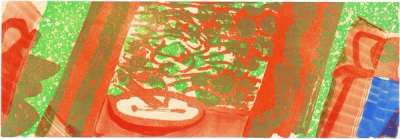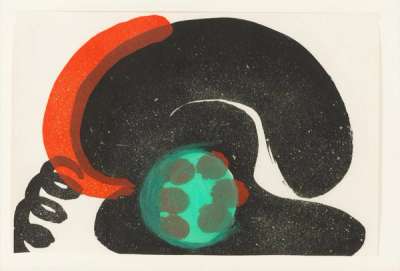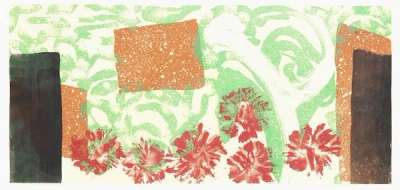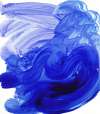The
Way We Live Now
Howard Hodgkin created his four-part print series The Way We Live Now in 1990, to accompany the release of Susan Sontag’s seminal book. Each is a painted etching in glorious colour, depicting figurative elements— including a telephone or an ashtray— echoing Sontag’s narrative regarding her experiences of the AIDS pandemic.
Howard Hodgkin The Way We Live Now For sale
The Way We Live Now Market value
Auction Results
| Artwork | Auction Date | Auction House | Return to Seller | Hammer Price | Buyer Paid |
|---|---|---|---|---|---|
 The Hospital Room Was Choked With Flowers Howard Hodgkin Signed Print | 5 Jun 2025 | Swann Galleries | £723 | £850 | £1,100 |
 As You'd Been Wont Howard Hodgkin Signed Print | 16 Nov 2022 | Toomey & Co. Auctioneers | £680 | £800 | £1,050 |
 In Touch, Checking In Howard Hodgkin Signed Print | 5 Apr 2022 | Sworders | £1,530 | £1,800 | £2,250 |
But He Did Stop Smoking / He Didn't Miss Cigarettes At All Howard Hodgkin Signed Print | 8 Mar 2022 | Rosebery's Fine Art Auctioneers | £850 | £1,000 | £1,300 |
Sell Your Art
with Us
with Us
Join Our Network of Collectors. Buy, Sell and Track Demand
Meaning & Analysis
The Way We Live Now is a series created by British painter Howard Hodgkin in 1990, comprising of four painted etchings. The prints were made and published exclusively for the release of Susan Sontag’s seminal book The Way We Live Now, and visually accompany the writer’s narration. Sontag’s story, which first appeared in the New Yorker in 1986, presented an interchange between written and visual culture that aimed to reclaim visibility for the gay community suffering from the ongoing spread of the AIDS pandemic, as well as defending the community from the pejorative repercussions of the pandemic on the mediatic representation of gay sexuality and promiscuity.
Each of Hodgkin's prints within this series follows Sontag's narrative and forms a visual representation of the sick mans journey, from hospital to home. Each title evokes a different stage of the story. As You’d Been Wont focuses on the message of irrevocability within the book, of something that was once had and now is lost. But He Did Stop Smoking refers to a comment made by the sick man’s loved ones as they noticed the fast decline in his health, with AIDS still not having a name and its causes uncertain. In Touch, Checkin In embodies the solidarity from friends following the man’s diagnosis, and finally The Hospital Room Was Choked With Flowers touches upon the gestures of love for the dying man.
In true Hodgkin’s style, however, the prints produced are not simple visual narrations, as much as they are representations of emotional states. In this series, the theme of loss and death take hold of the artist’s production as he himself navigated feelings of helplessness towards the lives that were being lost at the time. Despite being colourful, the prints are haunted by touches of grey, dark shades that symbolise the heavy spirit dominating the book.










